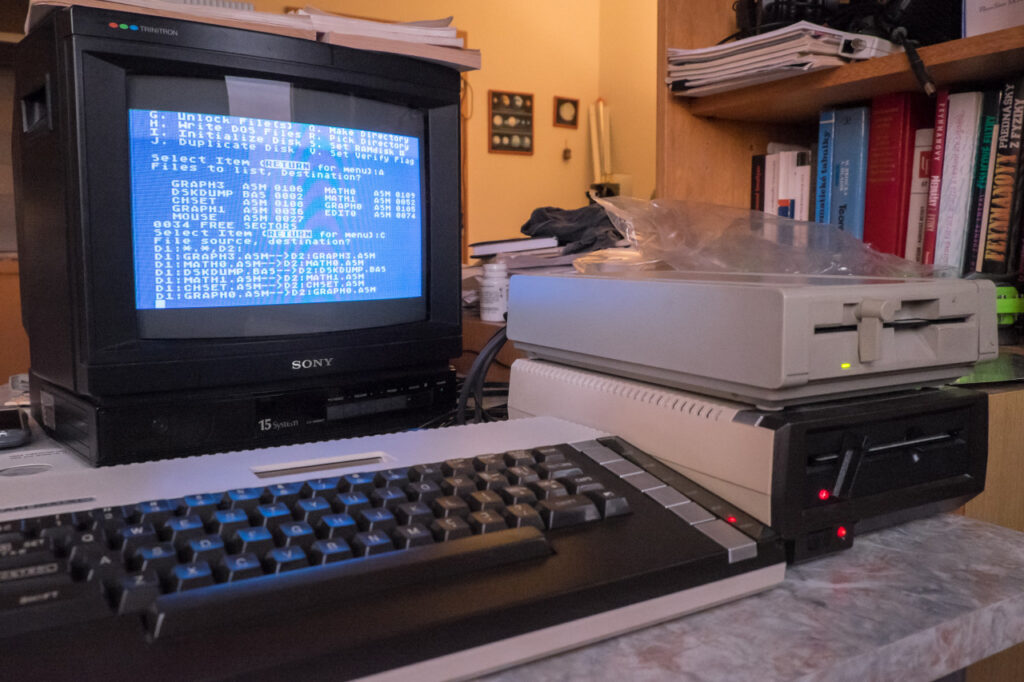David asked me if I could help him with transferring all files from the pack of floppy disks he used during the late 80s with an 8-bit Atari (800XE). We are working on the Atari version of our Sieve Benchmark (to compare the performance of old computers) and he told me that, as a kid, he created many assembly programs that can now speed up the development . The ultimate goal is to compare extremely optimized assembly versions of the benchmark for 6502, Z80 and 8088 to find out, which CPU is faster.
I didn’t have any modern disk emulator for the system so I transferred the files to the PC the old way. I used Atari 800XL and two floppy drives (1050 and XF551). At the beginning, I had just one drive, but then I realized that I was not able to create at least a small RAM disk on a 64k machine with MyDOS – that would allow me to copy files from one disk to another without using multiple drives (this is not straightforward when each of the disks has different density).
Copying files to different disks was necessary. David used the 130KB “ehnanced density” format that is not readable on floppy drives in PC. The Atari XF551 disk drive supports all the Atari formats up to the 360KB double-sided double density that is sort of compatible with PC drives. With the two drives connected to the Atari, I copied the files from the old disks to a few “new” ones and started searching what is necessary to do on the PC side.
At the end, I used two MS-DOS programs – ATUTIL for reading/writing individual files and WRITEATR for creating ATR disk images out of real floppies. All of this took me two evenings, but I’m happy that I didn’t have to use modern hardware to copy files both ways between 8-bit Atari and PC.
(btw David also decided not to use modern hardware so he is programming directly on the Atari 800XL with Atmas II macro assembler from 1985)
